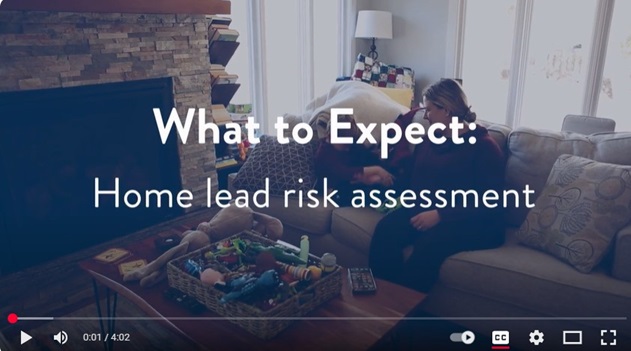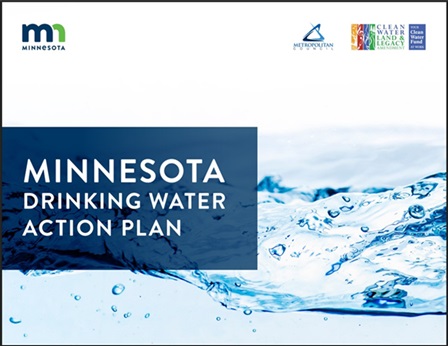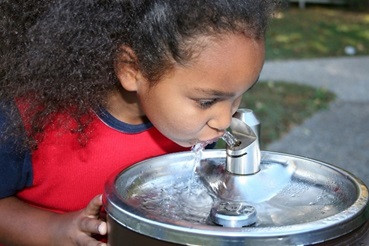Environmental Health Division
Highlights
Environmental Health Division
This information is currently newsworthy, seasonally pertinent, or is showcased to promote awareness..
Get email updates when information is added or updated to this website by signing up below.
NEW Report release:
PFAS Biomonitoring Best Practices for Minnesota Firefighters
The Minnesota Department of Health (MDH) has released a new expert report on best practices for PFAS biomonitoring for Minnesota firefighters, developed under legislative direction and in partnership with Eastern Research Group and Minnesota firefighter associations. The report outlines evidence-based, practical recommendations for conducting firefighter biomonitoring in ways that are scientifically sound, equitable, and informed by real-world conditions in fire service. MDH is now applying these recommendations to a three-year, statewide biomonitoring project that will help characterize PFAS exposure among firefighters across Minnesota. The report can be found at PFAS Biomonitoring for Minnesota Firefighters.
What to Expect: Home Lead Risk Assessment

The Minnesota Department of Health's Lead Program has a new video called What to Expect: Home Lead Risk Assessment (YouTube). This video can help families understand and see the process of a typical home lead risk assessment if their home is ever checked for sources of lead. Additional Lead resources can be found at Lead Fact Sheets, Videos and Brochures.
MDH launch state’s first Drinking Water Action Plan

Minnesota officially released the first official Minnesota Drinking Water Action Plan (PDF). The Plan is a 10-year framework of actions for ensuring everyone, everywhere in Minnesota has safe and sufficient drinking water. The Plan both uplifts many of the efforts underway and names some areas where there is need for more support and attention, including:
- Addressing the unfair challenges over 1.2 million private well users face and the challenges nearly 800 small city water systems face in testing for and addressing contaminants.
- Reducing the impacts from flooding and other climate change-related events on drinking water.
- Upgrading and modernizing data systems that house water quality data.
- Working with communities throughout Minnesota to understand their drinking water priorities and concerns.
The Plan, signed by MDH and six other agencies, represents our shared commitment ensuring that anyone, anywhere in Minnesota, can be confident it is safe to drink the water when they turn on the tap.
Lead in Drinking Water Testing for Schools and Child Cares

Kids are headed back to school, and Minnesota is working to make sure students have safe drinking water available while they learn. Through a grant from the Environmental Protection Agency, MDH is helping public schools, charter schools, licensed child care providers, and Head Start programs test for lead in drinking water. This program provides free sample kits and laboratory analysis to identify lead in drinking water. MDH staff also provides training and technical assistance to help facilities interpret results, and understand rule requirements.
Program is open to:
- Head Start Programs.
- Licensed Child Care Programs.
- Schools.
Encourage your school to learn more about this program at Minnesota Lead in Drinking Water Testing for Schools and Child Cares.
Test to be sure all’s well with your water well
More than 4 million Minnesotans rely on groundwater for their drinking water, and 1.1 million of them get that groundwater from a private well.
Wells can be a source of high-quality drinking water, but they require regular maintenance. If groundwater becomes contaminated, it can affect the health of those who drink it. More information can be found at Water Quality and Testing.
The Minnesota Department of Health and Tap-In Collaborative are offering free water test kits for private well households in eight southeast Minnesota counties in response to requests from the U.S. Environmental Protection Agency. The eight counties eligible for these test kits are: Dodge, Fillmore, Goodhue, Houston, Mower, Olmsted, Wabasha, or Winona counties. Test kits will include analysis for five common contaminants in well water including: coliform bacteria, nitrate, arsenic, lead, and manganese. Funding for the test kits is provided by the Clean Water Fund. More information can be found at Response to Nitrate in Southeast Minnesota.
Licensing System
Minnesota Department of Health Licensing System is available for Certified Food Protection Manager (CFPM), Registered Environmental Health Specialists/Registered Sanitarians (REHS/RS), Lead, Asbestos and Wells and Boring.
EH topics

The Environmental Health Division (EH) works on multiple topics to support the health of all Minnesotans. You can search these topics on the Topic Index webpage.
Minnesota Office of Accessibility
State of Minnesota’s free e-Learning program on how to create accessible documents.